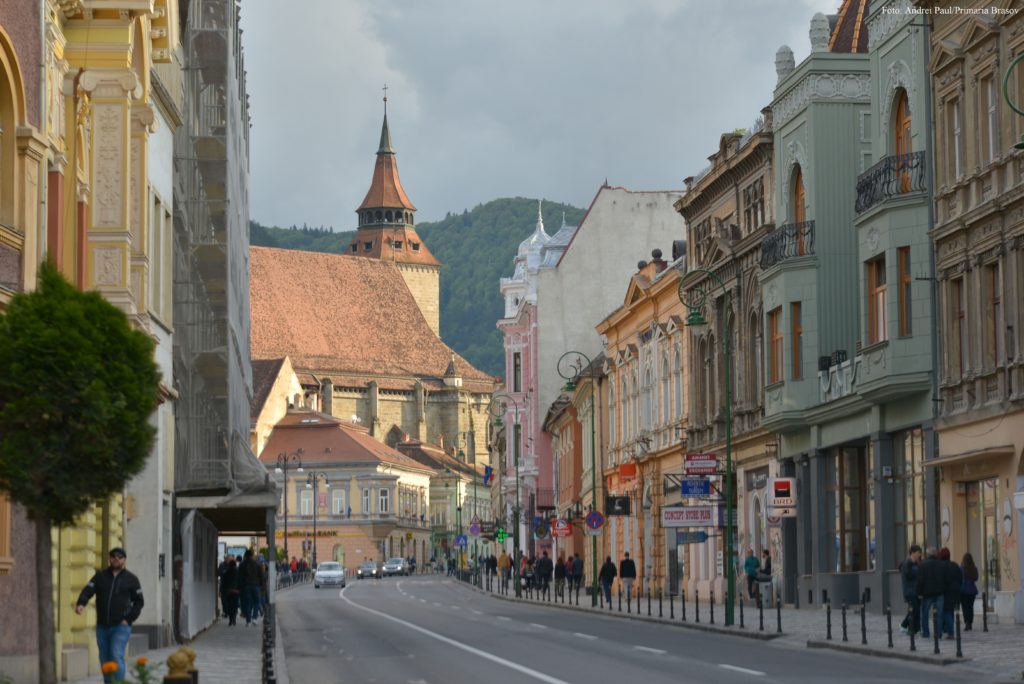Green mobility in Brasov
A chat with the communication specialist of the city's Energy Agency
When we decided to focus on mobility for our first newsletter of the year, I immediately thought to contact our member ABMEE, Brasov’s Energy Agency. Last October, the Romanian Minister of Environment, Water and Forests had announced that Brașov would be the first big city in the country to have 100% electric public transport!

We know about the programme on electric public transport in Brasov. What other possibilities are there for your citizens to move around in a more sustainable way?
L.M. Brasov is a city dedicated to lowering its CO2 emissions while growing the local community’s quality of life through its public policies. The public administration is looking to be more active in the field of behavioural change, support of active travel, cycling & parking policies, with the purpose of making the public space more attractive for people.
Brasov has many pedestrian areas, especially alongside the historic centre. In addition, there are ongoing projects looking into transforming new streets into pedestrian areas, taking steps towards converting most of the city centre in zones dedicated to leisure and walking.
A cycling infrastructure exists and we are developing it further. Almost every transport or infrastructure project plans to enlarge the cycling set-up. Furthermore, the city has a bike and electric scooter rental scheme in place.
Do you have a mobility strategy for Brasov? What are your objectives?
L.M. Brasov has a Sustainable Urban Mobility Plan, being one of the first cities in Romania to have such a strategy. Currently, it is being updated and extended. We plan to explore new mobility solutions and technologies, with a long-term and visionary approach.
The measures foreseen in the Sustainable Urban Mobility Plan will be complemented with other clean efficient transport policies through the Sustainable Energy and Climate Action Plan (SECAP) we are currently developing in the framework of the Covenant of Mayors initiative. The SECAP will be a key document, with ambitious 2030 targets! We would like to set a 55% GHG emissions reduction objective for 2030, using an integrated and cross-sector approach. We plan actions in public buildings, lighting, heating, transport, waste management, circular economy, participatory processes etc.

Brasov regularly participate to the EU Traffic Snake game. Do you have other projects or activities to engage citizens around sustainable mobility?
L.M. Recently, we set up Brasov’s Mobility Coalition, to bring all local players together and act in a coordinated way. We have been working together for a year, to make Brasov a city whose mobility solutions are designed and developed around citizens, together with citizens.
We plan to do so with the support of MOBILITAR, a Community Mobility Laboratory. This lab originated from a civil society initiative, with the support of the local administration and other key stakeholders. We will have public working sessions divided among topics like Accessibility, Mobility Culture and Integrated Mobility, bringing together citizens and specialists in architecture, urbanism, design, technology, sociology, mobility and public administration. We aim to engage citizens in the decision-making process through public debates, to stimulate ideation, co-design and co-creation. Citizens’ ownership of the solutions is very important for us; we want to become a living lab for innovative mobility solutions.
Brasov is part of the project TOMORROW. Are mobility aspects going to be included in the discussion around your transition roadmap? Which stakeholders are you cooperating with and how?
L.M. As a pilot city in the TOMORROW project, Brasov created a motivated team to work on our roadmap for energy transition and climate neutrality.
We set up a local Transition Team that covers the strategic areas of the roadmap (read more about it here) and MOBILITAR is one of the main results of the transition process initiated through TOMORROW. Urban mobility is one of the most important topics of the Transition Team, working to (1) define the local Sustainable Energy and Climate Action Plan for 2030, (2) test tools and put in practice innovative methods to involve the civil society at all stages and (3) develop the roadmap to Climate Neutrality in 2050.
What’s next for Brasov’s sustainable mobility?
L.M. Brasov is part of the HUB-IN project, aiming to develop and implement a framework to boost the regeneration of the city’s historic urban landscape. Nevertheless, the regeneration process will not be limited to the historic heritage in the city centre. We want to align it to our sustainable development goals, and contribute to delivering solutions for sustainable architecture, sustainable mobility and sustainable tourism in the historic city centre. Even though HUB-IN might not directly link to urban mobility, Brasov will concentrate its efforts into transforming the transport systems of this part of the city, to deliver clean and efficient mobility.


